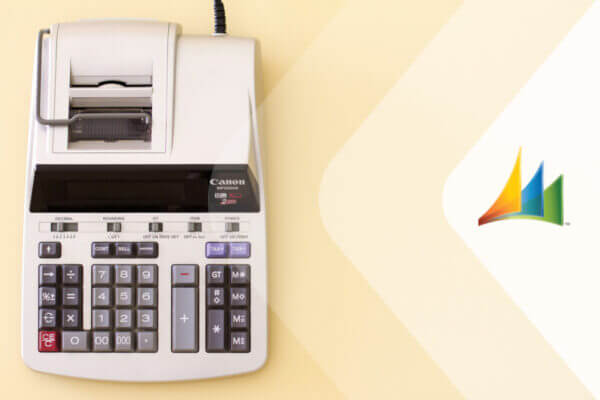Charitable donors need to trust that their funds will be properly managed by the nonprofit organizations they support. More specifically, that their donations will be used to accomplish the nonprofit’s mission. That’s why they often vet public charities before making a gift — to ensure their financial support will have an enduring impact on a cause close to their heart.
From community revitalization and affordable housing to natural disaster relief, wildlife preservation, and COVID-19 medical assistance, nonprofits have many different missions. But it’s important that they uphold high ethical standards if they want to be considered good stewards of their donors’ investments and worthy of their advocacy.
At the end of the day, a nonprofit’s long-term success hinges on the public’s trust in its commitment to accountability and transparency. Even the most successful among them rely heavily on fundraising and public contributions — and the ongoing support of its board of directors and other stakeholders. Nonprofit financial transparency isn’t just a matter of ethics and integrity, though — it’s also about legal compliance.
Nonprofit Transparency Requirements
According to the National Council of Nonprofits, tax-exempt nonprofits are required to give the public access to financial information and other important documents. This is often achieved by posting links for the following tax forms and materials on the nonprofit organization’s website or other business directory listings:
Additionally, everything from meeting minutes and annual reports to financial statements, executive compensation, and financial management forms needs to be accessible to board members, so they can fulfill their fiduciary duties. While public charities are required to preserve a culture of accountability and transparency by law, the trust that it builds between a funder and a nonprofit also drives strong performance across governance and other critical operations.
Key Differences Between Nonprofit Boards and Other Boards
The key differences relate to the missions, financials, executive staff, and governance practices.
Nonprofits:
- Mission: Highly important
- Financials: Funds come from public contributions in the form of grants, philanthropy, etc. with a focus on long-term goals
- Executive: Many board members
- Governance: Large board charged with volunteer governance practices
For-Profits:
- Mission: Important
- Financials: Funds come from private sources with a focus on short-term goals
- Executive: Few board members
- Governance: Small board charged with paid governance practices
TIP: Check to see if your state has “sunshine laws” for civic entities that are designed to keep discussions transparent to the public.
Nonprofit Financial Transparency
Villanova University and the University of Wisconsin—Milwaukee researchers compared mission-driven nonprofits that earned a GuideStar Seal of Transparency to those that did not, and they found that donors prefer to give gifts to transparent organizations. In fact, another report published by Give.org in 2020 stated that 73% of survey respondents indicated trust as a top selection criterion when choosing a charitable organization.
Top 11 Reasons Nonprofit Financial Transparency Matters
- Uphold a culture of compliance
- Meet legal requirements for tax-exempt organizations
- Maintain ethical principles
- Improve communication and workflow
- Enhance the quality of policies and procedures
- Implement internal controls
- Build long-term relationships around public trust
- Strengthen fundraising efforts
- Boost reputation
- Mitigate conflicts of interest
- Streamline approvals
Strategies to Improve Your Nonprofit Financial Transparency
As with other aspects of running a nonprofit organization, public disclosure is much easier said than done. Let’s look at 6 strategies you can use to meet your charity’s disclosure requirements and build trust with your donor base.
Maintain Directory Listings
Updating your online presence to include listings on third-party sites such as Charity Navigator and The Better Business Bureau can help “advance marketplace trust” by offering essential information to potential donors. These sites function as assessment tools for charitable givers looking for reputable nonprofit organizations.
Respond to Inquiries in a Timely Manner
Acknowledging and responding to inquiries with honest, transparent information is important in the charitable nonprofit sector. It exemplifies a commitment to not only transparency and accountability but service to others, which underpins the significance of ethical leadership. As potential donors and other interested parties seek important information, it’s best practice to make it easy for them to get the answers they need.
Open and Honest Communication
Whether you are meeting with stakeholders and board members or sharing solicitation materials online, it’s critical to be clear and honest about how funds are being — or will be — used. Also, be candid about your tax-exempt status, who’s on the board, and who’s responsible for the expenditures. This level of open and honest communication via email, social media, letters, or other forms of modern communication will go a long way with existing and potential donors to sustain long-term trust.
Design a Conflict of Interest Policy
Get ahead of any potential conflicts of interest — and associated penalties that may be incurred by the board and/or organization — by documenting a conflict of interest policy. The IRS actually requires that charitable nonprofits draft these written statements that expressly favor candor over both real and perceived conflicts of interest. Be sure to include the purpose, definitions, procedures, and violations and have board directors sign and date the policy before considering it official.
Submit Timely Financial Reports
Stakeholders need timely access to financial reports that detail data around funding and performance. It’s always advantageous to present financial statements and reports regularly. Utilize dashboards and other digital asset management technology to enhance the way you visualize and share your financial reporting metrics. Furthermore, managing your nonprofits’ documents within an electronic document management system (DMS) can help safeguard your processes and prioritize timely communication, transparency, and efficiency.
Improve Your Nonprofits’ Transparency with AP Workflow Automation & Document Management
As a nonprofit organization, you already have your work cut out for you as you strive to make positive changes in the world with limited resources. Connecting to PairSoft’s capabilities allows you to create a reliable audit trail for end-to-end tracking within the approval workflow and optimize your processes.
Your nonprofit staff can process gift documents transparently. Meanwhile, managers and executive directors can monitor changes and approvals on every gift batch record. Key features like its advanced content and meta-data search functions also improve search and retrieval speed when pulling gift-related documents for audits. Schedule a one-on-one call with our team to learn more about how you can improve your nonprofit financial transparency with PairSoft.





